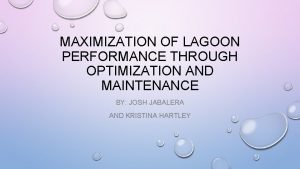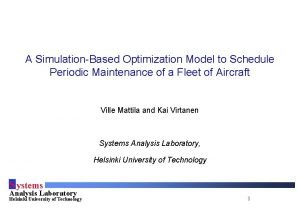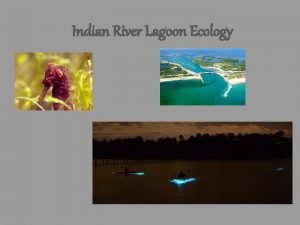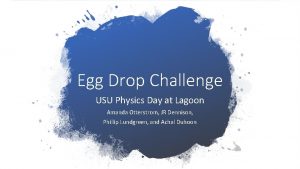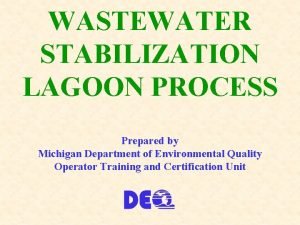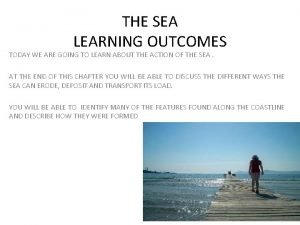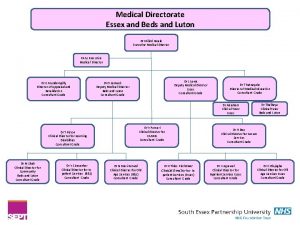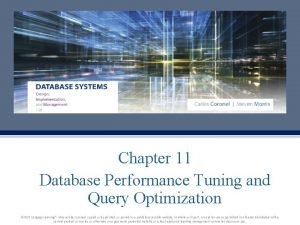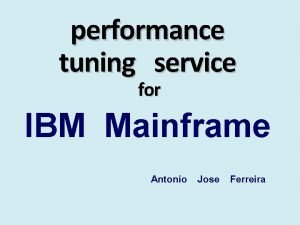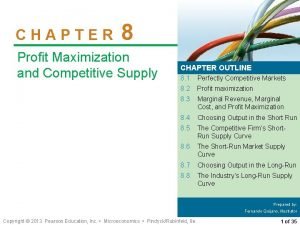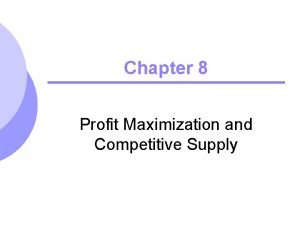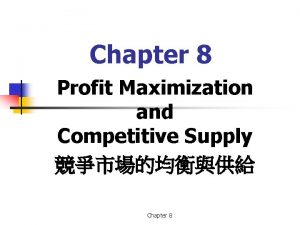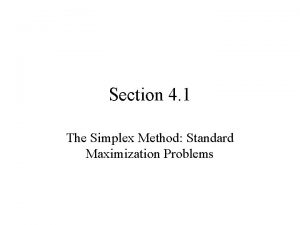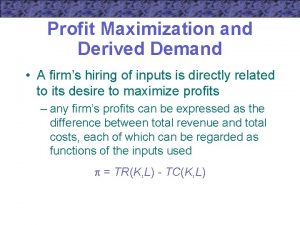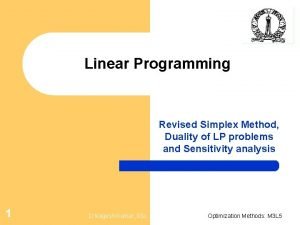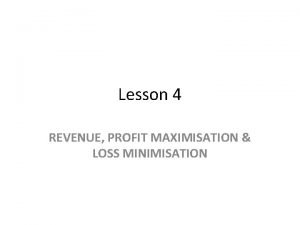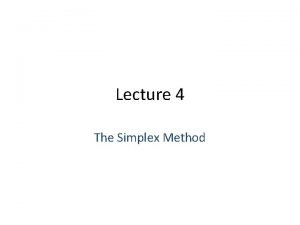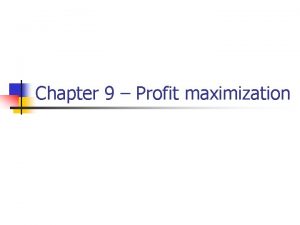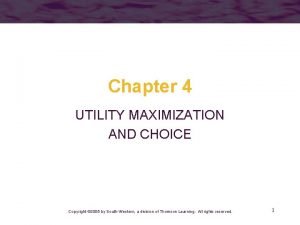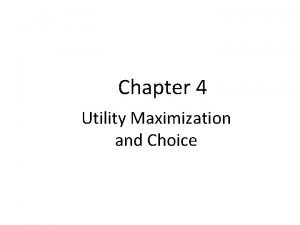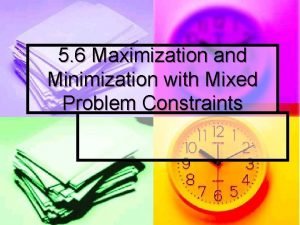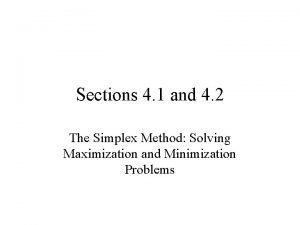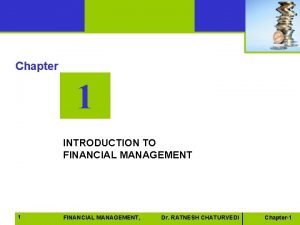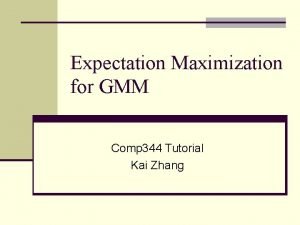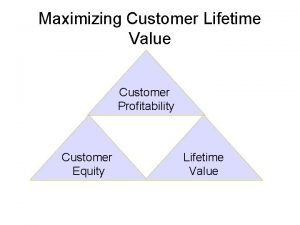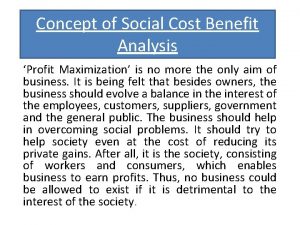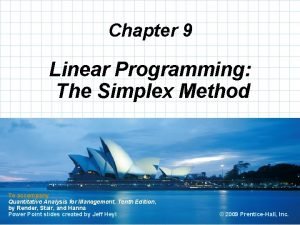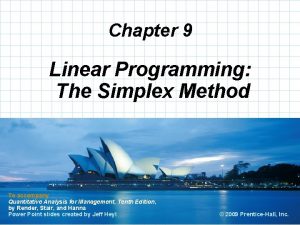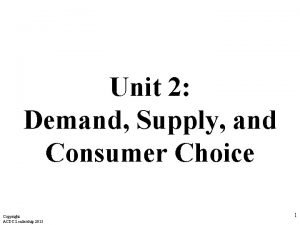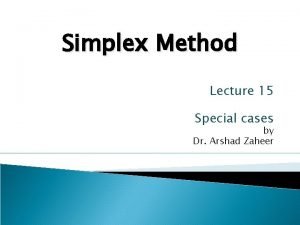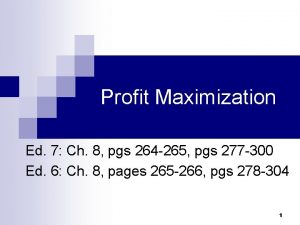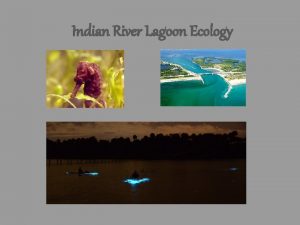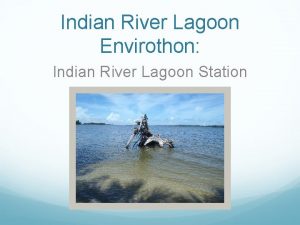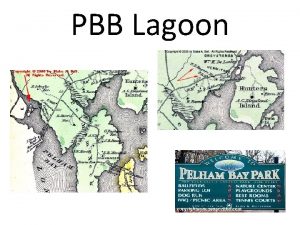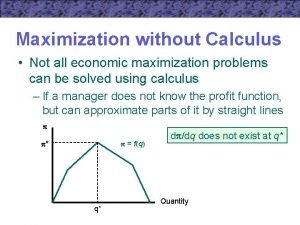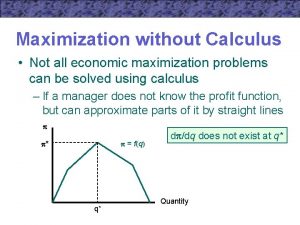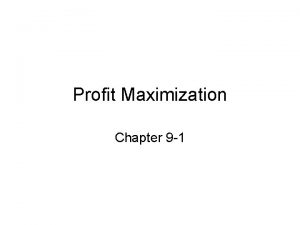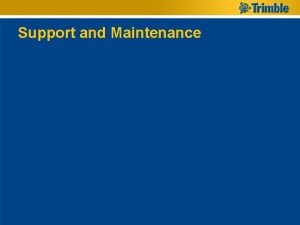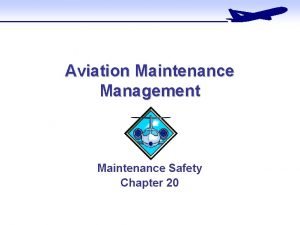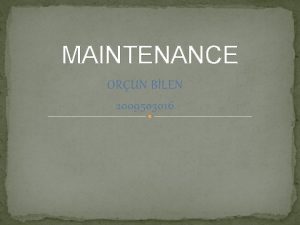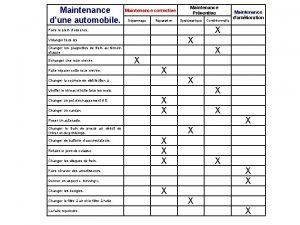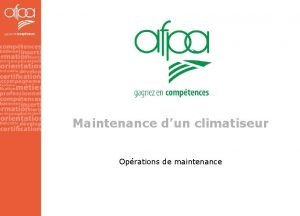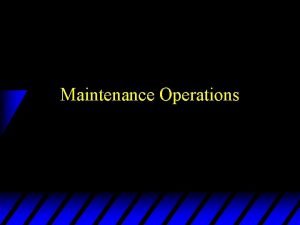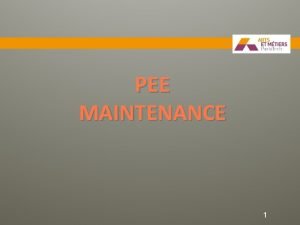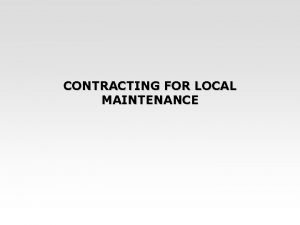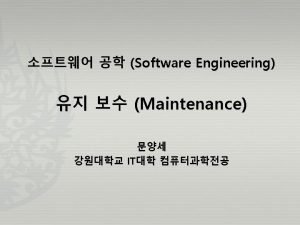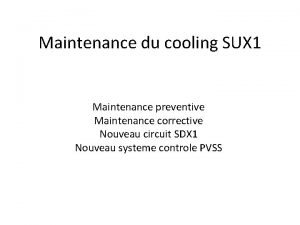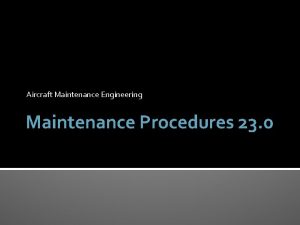MAXIMIZATION OF LAGOON PERFORMANCE THROUGH OPTIMIZATION AND MAINTENANCE















































- Slides: 47

MAXIMIZATION OF LAGOON PERFORMANCE THROUGH OPTIMIZATION AND MAINTENANCE BY: JOSH JABALERA AND KRISTINA HARTLEY

• Lift Station to Lagoon

Lift Station: • Check daily • Remove all garbage and debris • Check Floats and probes • Note and investigate abnormal inflows • Discussion – If its in the lift station its in the lagoon

Headworks • Approximately 40% BOD removal • Decreases rate of sludge accumulation • Prolongs life of pumps • Discussion

Community Outreach: To Flush or not to Flush – You Can Help! • DO NOT FLUSH • Baby wipes, disinfectant wipes, etc. . (even if they are “flushable”) • Facial tissues, Q-tips, cotton balls • Napkins, paper towels • Dental Floss • Egg shells, nutshells, coffee grounds • • Cigarette butts Chewing gum Kitty litter Sanitary napkins, tampons Bandages Diapers Pills/Prescription medications Poisons or any other hazardous waste

Toxic Substances Can Have Adverse Effects • Can be harmful to microbiology within the lagoon • Can kill aquatic life • Harmful to downstream users • Discussion

Vegetation Control

Poor Vegetation Control Can Cause: • • • Oxygen Depletion Excess Sludge Accumulation Insect Problems Damage to Dikes and Liners Burrowing Animal Problems Odors Oxygen Depletion Short-Circuiting Poor Circulation

Chemical Vs Mechanical Discussion



Variables Affecting Pond Performance • Chemical Influences • Natural Influences • Physical Influences

Chemical Influences • • • Loading Alkalinity p. H Salinity Toxicity Composition of Liner and Dikes

Natural Influences • • Solar Radiation Temperature Wind Speed Precipitation Evaporation Ice Cover Bacteria & Algae

Physical Influences • • Pond Configuration Pond Hydraulics Retention Time Seepage Inflow & Infiltration Pond Dimensions Aeration & Mixing

“Eleven Things You Must Know to Effectively Solve Problems in Wastewater Lagoon Systems” -Steve Harris

1. Is your lagoon properly sized for the community, industry, or load it serves? (Flow in MGD) x (Average BOD in mg/l) x (8. 34 lbs/gallon) Acres in Cell #1 • Typical facultative ponds can be loaded to 32 lbs BOD/acre/day • Primary cell should be removing between 60% to 80% of the influent BOD

2. What are the pond dimensions and depths? Important to help determine: • Detention time • Loading rate • Estimated time to desludge

3. What is theoretical retention time? What is the actual retention time? What is the flow? • Must know average daily flow and the volume of each pond • AVOID SHORT CIRCUITING!!!!

4. How much sludge has accumulated at the bottom of the pond? • Algae blooms becoming worse • Sludge accumulates at about 1 inch/yr • At 18 inches pond performance deteriorates

5. What are the dissolved oxygen (D. O. ) levels measured at different times and water column depths and different places throughout each lagoon. For an aerated lagoon, how many pounds of Oxygen are being supplied per pound of BOD 5 added?

6. What is the p. H at different depths and locations within the lagoon? What is the different times of the day, and between each lagoon? • Changes with depth • Where to sample • Affects pond’s ability to kill pathogens

7. What are the BOD 5 and CBOD 5 of EACH pond? • Primary Cell should be removing 60 to 80% of your influent BOD • Run series of BOD 5 diagnostics

8. Have any new industries moved to the community? Have there been any changes to cleaning procedures or new disinfectant added or changes in cleaning chemicals? • Should be added to the lagoon system slowly over time

9. Know how the lagoons temperature changes throughout the year and through the water column • Temperature trends will help predict blue green algae bloom, spring or fall turnover, and odors

10. Know what types of solids are leaving the lagoon effluent • • Each solid has meaning Sludge particles may mean time to desludge A daphnia bloom may be picked up as TSS Consult with lab to identify solids

11. Know the position and location of the influent, effluent, and transfer structures • Can adversely affect optimal water flow • Can cause short circuiting • Effluent structures can pass bottom solids into successive cells

Cold Weather Operations

Temperature Directly Affects the Rate of Biological Activity • Every 10 degree reduction in temperature will reduce microbial activity by 50%

Water Temperature Directly Affects: • • Chemical and Biological reactions The reaction rate constant used in pond design Bacterial mortality rate Thermal stratification Density driven circulation Oxygen solubility in water Algae, protozoa, and bacteria populations

Operations During Winter • Remove some aeration or reduce horsepower • Do not operate re-circulation • Maximize pond depth, liquid level • Maximize retention time • All cells should be operated to maximize retention time

How Temperature Affects Pond Mixing Cooler Fall Temperatures

Cold Winter Weather



Fecal Coliform Problems in the Winter • Low winter time ultraviolet radiation and p. H mean lower potential pathogen die-off rates • As warmer influent water enters an ice covered lagoon, raw wastewater can ride high in the water column over colder


Testing Procedures for Optimizing Lagoon Performance • Define Your System • Sample Collection, Analysis, and Management • Results Interpretation • Modifying Your System to Achieve Performance

1. Defining your System • • • Influent and Effluent Head Works Operated in Series or Parallel Diagram Consider Short Circuiting

2. Sample Collection and Analysis • • • Time of Day Depth of Sample Areas of Disturbance Grab Sample Composite Sample

Intra-Pond Sample Analysis • • • p. H Dissolved Oxygen (DO) Ammonia Nitrate Alkalinity Temperature (COD), (s. COD), (BOD 5), (SBOD 5) Total Suspended Solids (TSS) Sludge Blanket Profile

3. Results Interpretation • • Should settle large organic particles Trend the data over a period of time Look at the results between each cell Pinpoint areas of failing treatment

4. Modify Your System to Achieve Performance 5. Repeat Steps One through Four

Conditions that Reduce Performance • • • Flow through the system Sludge accumulation Available oxygen Toxicity Organic Load

Influences on Pond Hydraulics • • Pond inlet position, size, and location I & I and varied flow rates Pond outlet position Water temperature Sludge accumulation Position of aeration equipment and baffles Wind

References: Wastewater Lagoon Troubleshooting By: H&S Environmental, L. L. C.

Thank You!!
 Optimize wastewater lagoon
Optimize wastewater lagoon Aircraft maintenance schedule optimization
Aircraft maintenance schedule optimization Lagoon phosphorus removal
Lagoon phosphorus removal What is a lagoon
What is a lagoon Lagoon city map
Lagoon city map The black lagoon toronto
The black lagoon toronto Egg processing lagoon
Egg processing lagoon Korle lagoon ecological restoration project
Korle lagoon ecological restoration project Lagoon
Lagoon Tombolo diagram
Tombolo diagram Rochford hospital beech ward
Rochford hospital beech ward Database performance tuning and query optimization
Database performance tuning and query optimization Mainframe tuning
Mainframe tuning Profit maximization and competitive supply
Profit maximization and competitive supply Cost revenue and profit maximization guided reading
Cost revenue and profit maximization guided reading Profit maximization and competitive supply
Profit maximization and competitive supply Profit maximization and competitive supply
Profit maximization and competitive supply Tangential sawing of timber
Tangential sawing of timber Standard maximization problem
Standard maximization problem Monopsony profit maximization
Monopsony profit maximization Limitations of profit maximization
Limitations of profit maximization Dual simplex method steps
Dual simplex method steps Perfectly competitive firm profit maximization
Perfectly competitive firm profit maximization Simplex method
Simplex method Normal profit economics
Normal profit economics Utility maximization problem
Utility maximization problem Interior optimum for utility maximization
Interior optimum for utility maximization Big m method maximization example
Big m method maximization example Simplex method maximization calculator
Simplex method maximization calculator Module 53 featured worksheet profit maximization
Module 53 featured worksheet profit maximization Wealth maximization
Wealth maximization Expectation maximization tutorial
Expectation maximization tutorial Customer lifetime value maximization
Customer lifetime value maximization Objectives of financial control
Objectives of financial control Abt model of social accounting
Abt model of social accounting Chapter 9 linear programming
Chapter 9 linear programming What cj-zj represents
What cj-zj represents Expectation maximization algorithm
Expectation maximization algorithm Utility maximization
Utility maximization Special cases in linear programming
Special cases in linear programming Profit maximizing
Profit maximizing Profit maximization
Profit maximization Through one man sin entered
Through one man sin entered Tarnow fletcher furcation classification
Tarnow fletcher furcation classification Night of the scorpion introduction
Night of the scorpion introduction Performance management vs performance appraisal
Performance management vs performance appraisal Behaviorally anchored rating scale
Behaviorally anchored rating scale Jcids process
Jcids process
